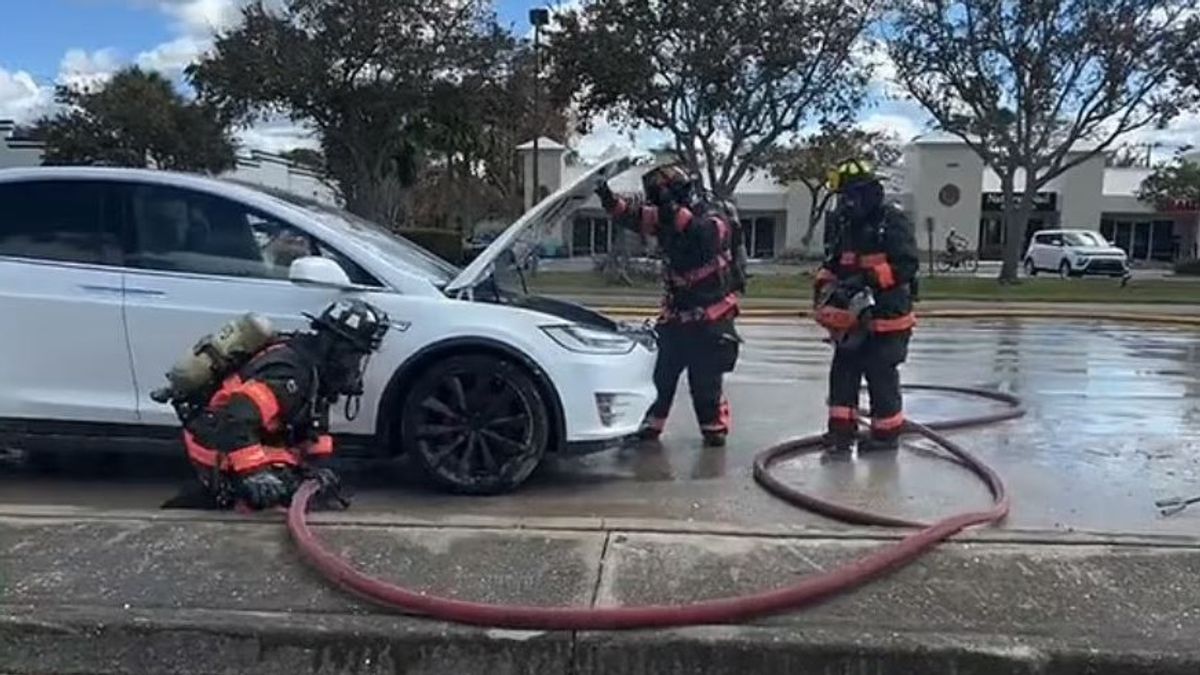JAKARTA - Firefighters in Florida are facing new problems after the damaging floods caused by Hurricane Ian some time ago. Firefighters are faced with explosive fires caused by batteries flooded in electric cars.
When EV batteries conceded large amounts of water, they were at risk of corrosion that could cause an unexpected fire. According to state top fire officials, Florida, the second largest EV market in America after California, with 95,000 registered vehicles.
There were so many EVs deactivated due to Hurricane Ian. When the battery was correlated, the fire started," said Florida firefighter marshal and financial official Jimmy Saronis, via his tweet on Thursday, October 6. That is a new challenge that our firefighters have never faced before. At least on a scale like this."
There’s a ton of EVs disabled from Ian. As those batteries corrode, fires start. That’s a new challenge that our firefighters haven’t faced before. At least on this kind of scale. #HurricaneIan pic.twitter.com/WsErgA6evO
— Jimmy Patronis (@JimmyPatronis) October 6, 2022
"Special training and understanding of EVs are needed to ensure these fires are extinguished quickly and safely," he continued in a follow-up tweet, quoted by the Daily Mail. "Thanks to [North Collier Fire Rescue] for their hard work."
patronis juga membagikan video saat petugas pemadam kebawah di Napolisia, Florida, menangani kebakaran yang dimulai dari baterai Tesla. Pengamat mengatakan bahwa krub telah menggunakan ratusan gallons air untuk mematikannya.
Hurricane Ian flooded several cities along the west coast of Florida State as the storm landed categorized as a category 4 storm carrying winds at 155 mph.
So far, the vicious storm has caused 101 billion-dollar deaths and damage - making it one of the most expensive storms ever recorded in the US. When it landed, electricity had to be extinguished for 2.6 million people across the state.
News of a battery-induced fire emerged as the Joe Biden administration pushed electric vehicles, through the Inflation Reduction Act which has an EV tax credit of $7,500.
Several states have issued legislation to gradually remove gas-powered cars, including California and New York, both which will ban gasoline cars by 2035.
These efforts are intended to reduce greenhouse gas emissions and reduce the impact of climate change in the coming decades. However, the two states lack infrastructure to drive tens of thousands of new vehicles without emissions.
In New York City, there are only 677 electric vehicle charging stations, and although the city will add 10,000 chargers by the roadside by 2030. The addition may not be enough to power all EVs expected to be on the streets by then.
The additional problem with EVs is cost factors, as most of the price now averages around 20,000 US dollars more than gas-powered cars.
It takes special training and understanding of EVs to ensure these fires are put out quickly and safely. Thanks to @NCFRPio for their hard work. #Hurricanelan pic.twitter.com/oN0RvQTG2U
— Jimmy Patronis (@JimmyPatronis) October 6, 2022
According to Kelley Blue Book, EV costs are 'far above the industry average and are more in line with luxury prices versus general prices.
There are 17 other US states that have joined the California movement which accounts for about 40 percent of the entire US new vehicle sales.
The largest EV automaker in the United States is Elon Musk's Tesla, which accounts for just under 70% of all those sales in 2021.
Another major uncertainty about the policy across states banning gas-fueled cars is how quickly precious minerals, particularly lithium, will be available to produce the huge amounts of batteries needed to meet the 2035 EV target.
Laurie tujuk, senior manager of government affairs for KIA, mengatakan kepada pejabat California Kamis lalu bahwa industri dapat mengalami kesulitan memenuhi target penjualan tersebut.
He urged states to support incentives for consumers to buy EVs and help build easier and more equitable charging systems.
The English, Chinese, Japanese, Arabic, and French versions are automatically generated by the AI. So there may still be inaccuracies in translating, please always see Indonesian as our main language. (system supported by DigitalSiber.id)












